Text
Final Blog: Blurring the lines between past and present, fact and fiction
Hell is a place on Earth. Or at least that’s what living in this country feels like.
Riddled with oppressive systems, the Philippines has long been struggling with the harsh reality of corruption amid poverty. Nearly every day, we hear news about political scandals and economic setbacks; but what about the unheard accounts that get swept under the rug by those in power? If not keen enough, it is easy to overlook the cruelty that most Filipinos go through. What we need is to not only foster awareness about these injustices but compel the people to act on them— and this is exactly what we wanted to achieve with our Digital Storytelling project.
At the beginning of this course, we were tasked to create a digital narrative that we must achieve by the end of the semester. It must incorporate all the learnings we have gathered throughout the discussions, a mix of both practical applications and personal experimentation.
When our production group was formed, we decided to merge our individual ideas into one output. Maybelle and Colie’s horror genre, Kirstein and Nico’s social realities, Paler and I’s mundane perspective, and Steven’s plan for a website format all came together to form “Becoming Filipino”—a digital satire series that depicts the dark side of this national identity.
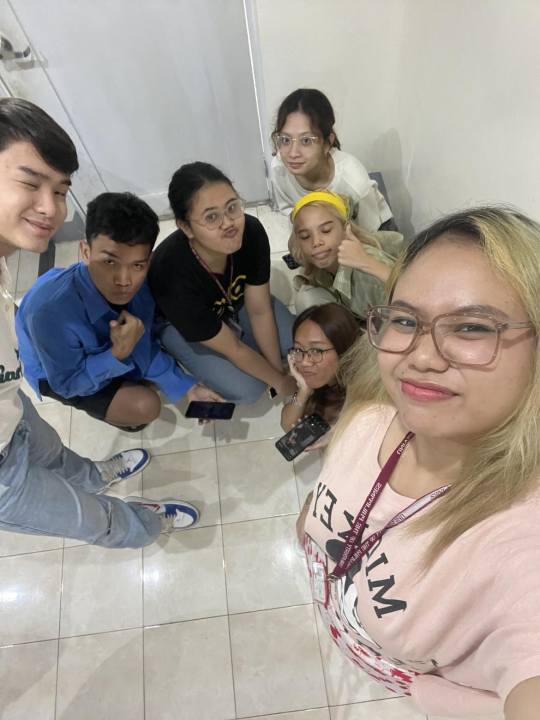
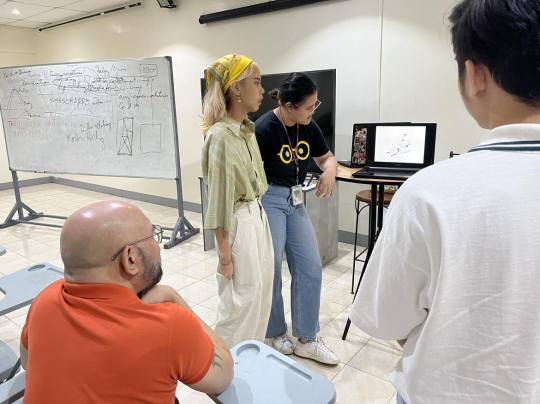
As a challenge, our group liked the idea of following a non-traditional story format. We wanted to thrust our viewers into a made-up online reality that bore a resemblance to real-life happenings— blurring the line between fact and fiction. We also wished to use modern technology as a tool and platform, while our project itself would feature a vintage appeal. In our Discourse and Design stage, we decided to use analog horror as our genre for two main reasons: one, it is a unique means of storytelling that is yet to gain popularity in the country; and two, it serves as a metaphor to the Filipino umwelt (this in itself is already a horror story). We also wanted to emphasize an immersive experience for potential viewers, hence the idea of creating a website for a fake government agency where they can “register” for a National ID and watch three Public Service Announcements before proceeding with the application.
To start, we researched more about the genre and discussed what elements we wanted to include in our videos. The scriptwriting focused on gender and socio-economic disparity, while the website creation mimicked the bureaucratic processes prevalent in the country.


During the Production stage, my role was curating the images, footage, and sounds to be used for editing. While collecting these components, I thought: wouldn’t this be a good time to experiment and see how they would look like in an analog horror set-up? So, I decided to do some photo and audio manipulation as a side-project (see more in these previous blog posts: https://bit.ly/41vkUeL and https://bit.ly/48f25i8).

I have always been interested in sound mixing and thought that this course was a good creative outlet I could use to practice my skills. Meanwhile, the photo editing also led me to some realizations:
In one of our lectures, we talked about the concept of Gilles Deleuze’s "any-space-whatever". This term describes a non-specific and abstract space that is not tied to any recognizable environment, making it an avenue for different sensations and effects. When our video editor (Maybelle) sent photos of our distorted ID pictures, I was reminded of the paintings of Francis Bacon— an artist whose works Deleuze based “any-space-whatever” on.


Edited photo on the left, Bacon's "Three Studies for Self-Portrait" on the right Our edited images (which are featured in PSA No. 3) are eerie and almost difficult to identify. It looks human but not quite, evoking a sense of uncanny that gives the overall viewing experience an unsettling feeling. Once both visuals and audio were superimposed on each other, we were able to reproduce the odd atmosphere distinct in analog horror. The clicks, static, and glitches from old cassette tapes and TVs played into the nostalgia factor, while the abstract and distorted photos provided the uneasiness. This shows how the creative interplay of text can be used to manipulate the feelings of the viewers; we stimulate their senses to elicit particular reactions. After we completed the videos and the website, the group moved on to the Distribution proper. We opted for a transmedia approach, using both written and recorded marketing materials to promote the project via social media (and word-of-mouth too).

First, we opened a TikTok account where we would post our teasers and guidelines for the site. As part of our promotional content, we invited students and influencers to react to our project and also share their realizations from the overall experience. One reactor struck me when she said how the PSAs were able to reawaken her social consciousness after being distracted by personal matters for some time. It was proof of how we were able to get our message across despite the unconventional method of storytelling used.
We also did a DP blast on Facebook, plugging the Philippine Credential System website in the caption to gain a wider reach. This turned out to be an effective strategy as we received at least 30 registrations for our “service”.


The response was overwhelming in a good way, with most of the feedback we received being positive. I did not expect it would garner this much of an audience, but our efforts really paid off. Our first TikTok teaser (which we filmed for a limited amount of time after class) even reached over 600 views! One commenter shared how it gave off "Black Mirror" vibes— a popular series known for its satire and borderline horror stories.
Now that we have reached the end of our project and the course as a whole, I am left with an important learning brought up in our Evolution of Storytelling lecture:
The purpose of stories is not only to inform, entertain, preserve, and influence— stories also have the power to analyze and transform the world.
“Becoming Filipino” and the other works assigned throughout the semester show how stories can be used as a tool for progress. The discomfort you feel when entering our site and watching the PSAs— all representing the plight of the Filipino people— should not only make you feel wary. It must arouse you to fight and resist against the systems and people that perpetuate our suffering.
----------------------------------------------------------------------------
Now imbued with new knowledge about storytelling and its potential to communicate messages that can change our lives, I feel the need to further develop my skills as a writer and editor. This course has reaffirmed the responsibility that storytellers like us should always keep in mind: to create tales that not only serve oneself but also touch the lives of the rest.
Airam Crisna Limatog COMM 154-A
0 notes
Text
Are you an official Filipino?
After weeks of production, our project "Becoming Filipino" is now ready to launch! With the videos now completed, our editor (Maybelle) has also finished the Philippine Credential System website. We have some exciting ideas ahead for our distribution phase and are now currently in the midst of executing them.


Access the website now: https://bit.ly/becomingfilipino One of our plans is to create a social media campaign for our series. Using TikTok as our main platform, we will be releasing a set of teasers and reaction videos of viewers accessing the site in real time.
To kick things off, we did a quick and short prod for our first reel. We borrowed an analog TV from one of our seniors and used it to project our three PSAs. Seeing our videos flashed on an actual old television was so different from watching it on a laptop screen. It added a new sensory aspect that contributed to the eerie atmosphere we were trying to achieve (I cannot accurately describe the experience in words; it was really something you had to see for yourself). It was at this moment— the lights turned off and the audio at full volume inside the cramped Radio Room— that everything fell into place. We have successfully created Analog Horror. Some behind-the-scenes:
Catch our teasers here (and follow us too!):
0 notes
Text
Dear Diary: I miss you!
In our report about the Evolution of Storytelling, we touched on one topic that piqued my interest: the Personal Narrative. Intimate and relatable, the personal narrative emphasizes individual experiences and reflections. It captures our memories and preserves them to be looked back on in the future— offering not only sentimentality but an insight into what our lives were like during specific points in time. The discussion reminded me of how I used to love keeping diaries growing up. By the end of the year, I would reread my entries and see what I was doing, how I was feeling, where I was going, and who I was with— my past recorded through pen and paper. With how fast-paced everything is nowadays, it becomes easy to forget the mundane things that give meaning to our individuality; so, it's nice to have something to hold on to when remembering who we really are.
Dear Digital Diary, College doesn't seem so bad after all. These days, I find it hard to keep a physical diary. But I realize, why not have a digital one instead? If I spend so much time on my phone and laptop, I might as well use it to bring back an old hobby.
At present, I have turned to photo collages and video montages as a way to record my everyday experiences (my "umwelt", so to speak). I also like adding music that best captures what I largely felt for the day, so when I rewatch them, I know exactly what I was going through mentally and emotionally. I post these diary entries, like the one above showing a busy week at school, to my private Instagram account. I'm happy to have reclaimed something I have always loved doing, instead now it is imbued with modernity.
0 notes
Text
Experiment #2: Analog through Hearing
Heat. Light. Sound. Movement.
Previously, I worked on exploring the analog horror genre through its visuals. This time, I want to work on manipulating voices, music, and sound effects— an admittedly scary endeavor (listening to eerie audio is certainly not my hobby) that I am nonetheless hoping to enjoy and learn from.
As mentioned in my other blog post, I am in charge of compiling the sounds to be used in the three PSAs. Using an online text-to-speech generator and available music archives on YouTube, I tried stitching the elements to see how they would work with each other:
For this first try, I wanted to give off a patriotic feeling to tie in with our concept of being a government agency. Since we cannot distort the National Anthem (I don't want to get sued), I decided to just boost the bass and leave the rest unchanged— this way it would sound more low-quality and old-timey. I added a click and static hiss at the beginning to mimic a VHS tape being inserted and a buzzing TV, respectively. For the narration, I played around with the different options in the Microsoft Sam TTS Generator (https://www.tetyys.com/SAPI4/) and settled for a generic-sounding man. I also altered the pitch to be a little lower and the speed to be faster as it felt more fitting to the Public Service Announcement theme.
This second try was tapping more on the horror feel. I changed the pitch to make it sound like a whisper— giving off an unsettling vibe from the get-go. The glitches are also more aggressive here to make it more jarring for the viewers, followed by a short pause to give them time to think: what's next? To juxtapose this, the PSA ends with a cheery "waiting in the lobby" music. I imagine eliciting an uncomfortable laugh when this happens, which does tie in with the satirical theme of our videos. Overall, I think this experiment was also a good way to explore analog horror. I am excited to see the output once the visuals and these sounds come together
This second try was tapping more on the horror feel. I changed the pitch to make it sound like a whisper— giving off an unsettling vibe from the get-go. The glitches are also more aggressive here to make it more jarring for the viewers, followed by a short pause to give them time to think: what's next? To juxtapose this, the PSA ends with a cheery "waiting in the lobby" music. I imagine eliciting an uncomfortable laugh when this happens, which does tie in with the satirical theme of our videos. Overall, I think this experiment was also a good way to explore analog horror. I am excited to see the output once the visuals and these sounds come together
This second try was tapping more on the horror feel. I changed the pitch to make it sound like a whisper— giving off an unsettling vibe from the get-go. The glitches are also more aggressive here to make it more jarring for the viewers, followed by a short pause to give them time to think: what's next? To juxtapose this, the PSA ends with a cheery "waiting in the lobby" music. I imagine eliciting an uncomfortable laugh when this happens, which does tie in with the satirical theme of our videos. Overall, I think this experiment was also a good way to explore analog horror. I am excited to see the output once the visuals and these sounds come together— considering how strange the two are separately, I expect it would be odder (and slightly comedic) if the two are imposed on each other.
0 notes
Text
Experiment #1: Analog through Visuals
While I was scouring the Internet for possible photos to be used in our output ("Becoming Filipino"), I felt the need to try my hand at manipulating the images sourced. One, because it could help me get a better feel of how they would look once translated into analog horror; two, because it provided inspiration on how the production phase would continue (and three, because I had some time to spare and thought it would be an interesting side-project). Once I picked out the test photos, I headed to Canva to start editing. I recalled the different visual elements of the genre and applied them in my experimentation:


Recreating camcorder videos through filters and overlays The most notable feature is the black-and-white filter used to mimic vintage films that were prominent in the past. Adding glitchy overlays and slightly smeared elements mirrored the low-quality footage from camcorders and VHS tapes, emphasizing the analog feel I was going for. Meanwhile, I wanted to subtly incorporate horror by warping the photos— the disfigured faces, kinked joints, and hard-to-recognize shadows making the images look uncanny. Its unconventional look almost leans towards the idea of the "any-space-whatever", but the space and figures still being identifiable hinder it from being fully considered as such. There was only so much I could given the simplicity of analog horror visuals. However, this little project still proved to be quite useful— now I have an idea of what the pictures would look like once our group reaches the post-production stage. I am also planning to work on experimenting with sounds, and I am curious to see how the unsettling feeling that these photos provide will be expounded with the addition of music and sound effects.


Adding horror through distortion On another note, this activity also gave me an "Aha!" moment while I was doing the editing process: Amid modern technology, we find ourselves engaging in an interplay between the past and present. We use digital tools to resurrect elements from bygone eras into the contemporary, the filters and overlays serving as the means to evoke sentimentality. It's amazing to see how we continue to preserve vintage visuals and how easily we can "transport" to the past with a simple click of the mouse. If used right and well, imagine how interesting it would be to have more digital stories that integrate nostalgic elements into modern experiences— something that I truly look forward to in the future.
0 notes
Text
Becoming Filipino: The Production
We have finally started the production stage! For this project, I am in charge of compiling the sound (background music and narrations) and visuals for the three PSAs. To create the narrations, I made use of an online Talk-to-Speech generator typical of an analog horror output. I experimented with the different voices available, as well as the pitch and speech of the lines, so I could match the energy projected by our screenwriters. Some lines were said normally while others were whispered, with this variety creating a mix of standard and unsettling narration.

Keeping in mind the nostalgic factor, the background music we chose were from 50s commercial and "grocery" sounds. This is a common practice for analog horror films, where the lively and upbeat tunes juxtapose the chilling visuals (and distortion of the narration at times).

At this point, I am planning to curate the photos and footage to be used in the PSAs. I'll make sure to note the different visual elements we have discussed last time and the observations I made from the various analog horror series I have seen (which to be honest, do make it difficult for me to sleep in the dark at night— but I'm willing to push through for the sake of the message and the arts ✊🏽).

0 notes
Text
Becoming Filipino: The Design
In this step of the framework, our group discussed about the different visual and spatial elements of Analog Horror. We held a meeting to specify what design factors we should consider for our production phase, which consists of the following:
Analog Technology: using VHS tapes, audio cassettes, and CRT monitors to evoke an nostalgia an unsettling feeling accompanied by nostalgia.
Image/Sound Distortion: incorporating glitching overlays, flickering of a CRT monitor, cracking cassette tapes, and muffled audio to create an immersive and emotional experience for the viewers.
Found Footage: putting actual documentations of Filipino will make the story feel more "real"; after all, the plot is a mirror of the country's social reality.
Mismatch: to create a more uncomfortable viewing, the narration must be calm and uplifting while the images and videos on-screen depict graphic representations.
An episode from one of my favorite web series, "Local 58" (May also view more here: https://www.youtube.com/@LOCAL58TV)
As an avid fan of analog horror, I feel hopeful that our group can pull off this concept. This may not be a common design choice, but we justify it as a distinct way of presenting the country's concerns that "shakes" the viewer to its core. Our project paper describes the use of horror as a metaphor: "The supernatural elements in the series can serve as allegories for the challenges faced by the country, allowing a nuanced exploration of these issues while maintaining an uncomfortable and eerie atmosphere— an accurate reflection of the actual fears that come with the Filipino identity."
We do acknowledge that using this genre may cause hesitance for some people to engage, but we think it could be a chance to bring this medium to new audiences. Our series also does not incorporate the typical features of horror films like jump scares, but instead relies on the subject matter and nostalgic elements to provide a sense of unease.

0 notes
Text
Becoming Filipino: The Discourse
One of the major requirements for the semester is to create a digital storytelling output applying the different concepts discussed in the past weeks. For our group, we decided to create an interactive analog horror series titled "Becoming Filipino".

Don’t be fooled by the façade. The ugly truth hides in plain sight.
This story explores the numerous disadvantages attached to the Filipino identity. It shows the unfortunate circumstances experienced by those living in the country, presented in the unconventional and unsettling style of vintage-inspired storytelling.
The plot revolves around a young adult registering for a National Identification Card. He logs on to a website to go through the registration process but is soon interrupted by an online bug, prompting him to click and be redirected to a subsite. Here, he is presented with three Public Service Announcement (PSA) videos that brief him on the pertinent information needed before proceeding— each one revolving around different aspects of being Filipino: PSA 1: Me and You
This video discusses the gender and socio-economic hierarchy in the Philippines. The first time I read the script created by my groupmate Colie, I saw how our choice of medium really highlighted the horrors of living in a capitalist and patriarchal country. Analog horror is a unique choice because it amplifies the already existing uncomfortable feeling we subconsciously associate with these systems.
PSA 2: Behind the Smile (Is the Struggle)
This episode, written by Nico, focuses on the plight of the peasant and working sectors in the country. It depicts the dark side of being part of the workforce (despite being the backbone of Philippine society) through graphic scenes showing their struggle.
PSA 3: Why are You a Filipino?
The final video represents "Filipinoness as a tangible concept of horror" by allowing the audience to reflect on the social realities shown by the previous PSAs. As the last stage of the registration process, it asks the viewer's personal information— but before the clip ends, it constantly asks if he/she is ready to take on the identity despite the horrors witnessed. In this stage of the project, I feel excited for what is to come. Although my main role lies in the production part, the contributions I have seen so far make me eager to push forward and see what our outputs would be.
0 notes
Text
An Idea For Future Storytelling
When Gunther Kress and Theo van Leeuwen's "Semiotic Stratification" was first introduced, we were tasked to create an individual story proposal following the framework of Discourse, Design, Production, and Distribution. Although this project was not fully fleshed out, the idea behind this story is something close to my heart. I am keeping this for future use, which would serve as my my creative outlet if given the chance to implement it some other time:

A temporary distraction. A look at what could have been.
Unfulfilled dreams and monotonous routines– these are the typical experiences that prompt one to seek escape. When reality becomes too dull and frustrating, we usually find means to divert our attention to other things– even those that transcend the environment around us. This is the central theme of “Scrapped”, a short film exploring the ways we ‘flee’ into our imagination with the use of mixed media and graphic animations. It serves as the author’s personal creative outlet by portraying anecdotes in a non-typical manner.
Discourse:
The story revolves around a young girl in college. Feeling stuck in her studies, she dreams of what her life could be if she were free to choose what she wants. She does this by entering an imaginary world where she gets to live out different personas representing her different goals. Soon, she wakes up grounded in her physical reality, realizing that she is back in her unfulfilling life. To portray this, the 2-minute film (maximum) will be divided into three acts:
The Discontentment The alarm rings as girl groggily wakes up and prepares for school. She spends her day slaving away in her studies, looking bored as she as she takes notes and reads in class. She clearly wants for something more.
The Scrapped Dreams At home, she organizes her things when she finds an old scrapbook— one themed about what she wants to be. As she opens the project, she begins to imagine what it would be like if she had achieved such aspirations. She transforms into different identities: a doctor, a singer, an actress, an author, as she navigates through the dream world. She gradually grows happier along the way.
The Return She reaches the end of the scrapbook and comes back to her ‘real world’, She looks around and feels disoriented as disappointment settles on her face. After a long sigh, she decides to go to bed. Eyes closed, the screen turns black and seconds later the alarm rings again.
Inspo Video: zuveen’s “Supercut” (2023)
Throughout the story, the concepts of somatic simulation, paracosm, and pharmakon will be utilized to drive its meaning:
On Somatic Simulation
As the film makes use of mixed media, the combination of real footage and digital alterations will create different sensory perceptions for the audience. For instance, doodles may surround the subject to help emphasize her emotions (similar to how comic books use symbols to depict the character’s feelings).
On Paracosm In line with theme of escapism, the girl creates an imaginary world resembling a scrapbook to cope with her frustration. She herself turns into a magazine cut-out, just like the rest of the objects around her. Here, she fulfills what she otherwise cant in the real world.
Aside from providing a unique aesthetic, this stylistic decision also serves as a metaphor. It plays into the idea that all of the experiences she has in the “scrapbook land” are her actual scraps (i.e., discarded dreams, ungranted wishes).
On Pharmakon
As mentioned, the film ends with the girl out of her imagination and back into her weary life. It is implied that she does this every day as the ending circles back to the beginning of the story (marked by the sound of the alarm clock). The repetition may be her way to deal with her situation, but it can also aggravate her feelings of discontentment. It poses the question: will she continue to live unhappy and discouraged, or will she find a way to get out of the endless cycle of dissatisfaction?


Inspo Pics: Stills from fakeplastictree’s Motion Graphic (2023)
Design:
To convey the film’s message, the following elements will be used for the story’s design:
Mixed Media and Graphic Animation
Real footage will be shot and digitally altered by adding filters and illustrations (each addition with symbolic value).
Graphics will consist of personal and outsourced pictures that will be assembled together in a scene. These collages will be a narrative device in the subject’s paracosm.
Color
Contrasting hues will help separate what is fictional or not in the story’s reality, and consequently directs the atmosphere of the differing scenes.
In the ‘real-world’ scenes, the colors will be desaturated (nearly grayish) to give a more dull feel. On the other hand, the imaginary place will be vividly depicted to emphasize the girl’s liveliness as she lives out her dreams.
Music
Scenes in the real world will only make use of natural sounds. No background music will be played to emphasize its dullness.
The imaginary world will be accompanied by a lively, fantastical score to highlight its energy.

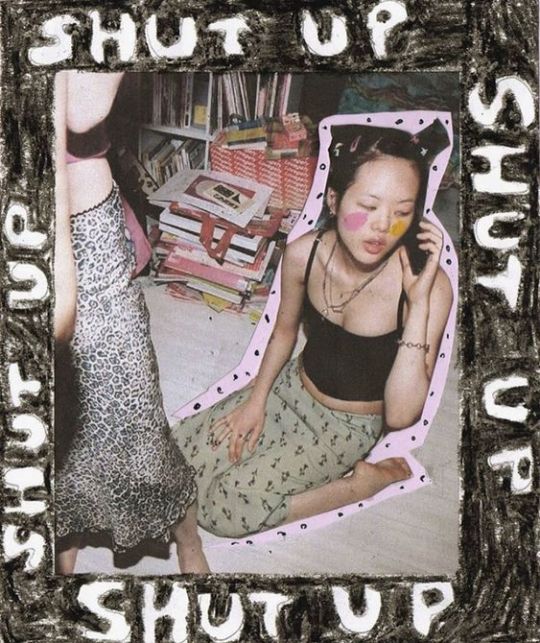

Sample photos (courtesy of Andrea Lux, Rachel Hudgson, and Scarlett)
1 note
·
View note
Text
Where did you come from, Where did you go?
Walking around campus, I noticed some images that reminded me of the lesson about Vectors. In terms of visual language, this refers to the lines and shapes that depict direction. They function as "verbs" that connect or lead one idea to another— a graphic representation of a relationship.
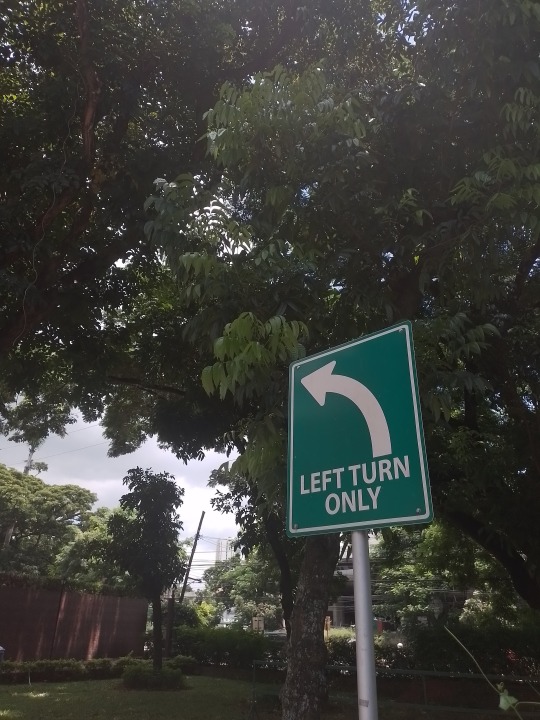

0 notes
Text
Notes on Semiotics
Text, through its signs and symbols, can hold multiple meanings depending on one's interpretation. Today's discussion on semiotics introduced the three different ways meaning can be created: 1) Representational - how text is represented; how they appear, feel, and are heard 2) Interactive - how we interact with the text through our senses 3) Compositional - what composes the text; includes the atmosphere (consists of the heat, light, sound, and movement) I found myself applying these concepts during the recent 1081 Multimedia and Art Exhibit, wherein I noted the following analyses of the works that stood out to me most:
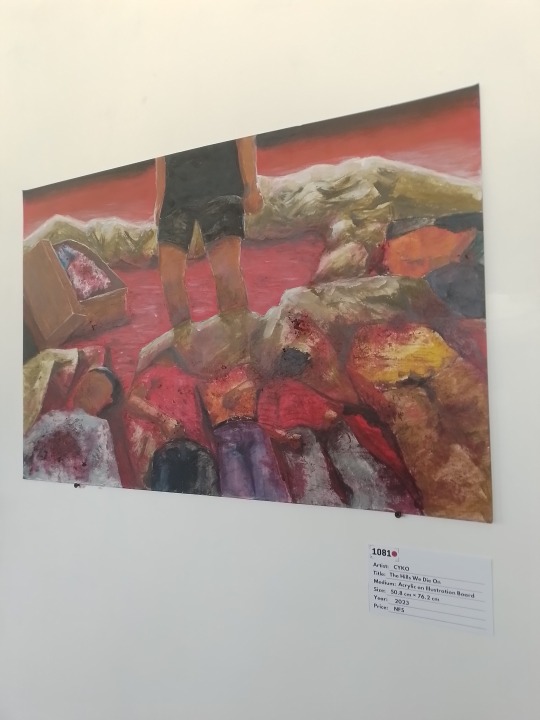
"The Hills We Die On" by CYKO
This painting represents the victims of Martial Law, with each bloody body gradually morphing into the hills where many of them sought refuge. The graphic image already elicits an uncomfortable reaction; personally, I felt frustrated by the number of lives lost during this era of struggle. I relate to the man standing in the middle of the work, who despite his face not being shown, emanates a feeling of anger for the fallen ones. The somber atmosphere, emphasized by the black and red hues, highlights the pain of those who were wrongfully killed during the dictatorship.
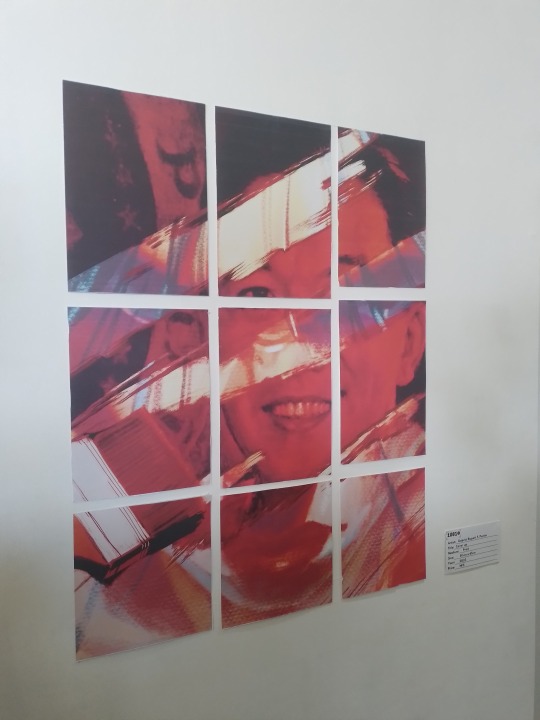
"Cover Up" by Gabriel Panim
Broken pieces of a manipulated image— this piece shows cut-out images of Marcos Sr., who is covered up by smears and blood. The artist shared how this represents the main strategy he used to maintain power during his regime, which was to cover up his wrongdoings and to distort the meaning of his (abusive) actions. For me, it serves as a constant reminder of how ideology can be used to further the influence of those who do not deserve it. It is especially relevant now in this age of historical revisionism, where the same tactic of "covering up" the past gives incompetent leaders a chance to control the country.
0 notes
Text
On Point of View
Today, we learned the concept of the "Umwelt", a term coined by biologist Jakob von Uexküll to mean one's environment or surrounding world. It revolves around the idea that every organism experiences its surroundings uniquely, with its point of view dictating the type of sensory and perceptual interactions it has with the world. It shows how reality is subjectively constructed, as each organism has a distinct way of interpreting its environment. An example of a bee's Umwelt (as illustrated by von Uexkül, 1934):
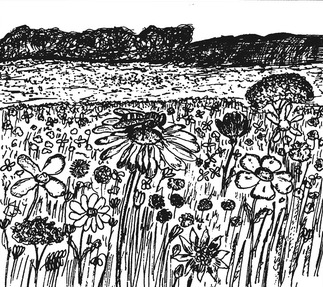
Scrolling through my photos, I realized how I take random pictures at different times of the day to show what I am doing or going through. These photos then serve as a representation of my Umwelt— a concrete rendering that can make others see how I perceive my surroundings. In this case, digital means enable us to view the world through the eyes of other individuals. POV: You're Airam going about her day
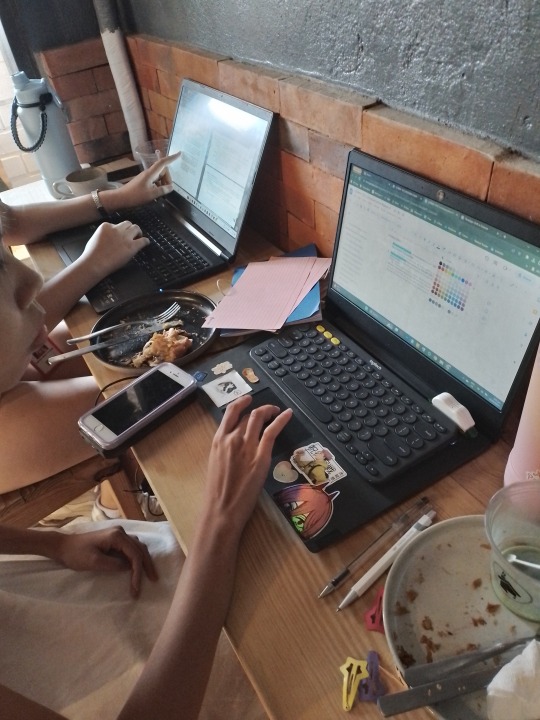
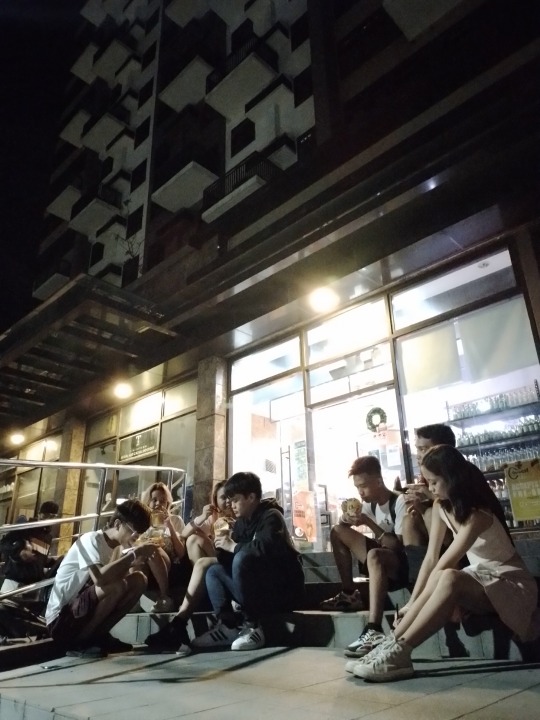
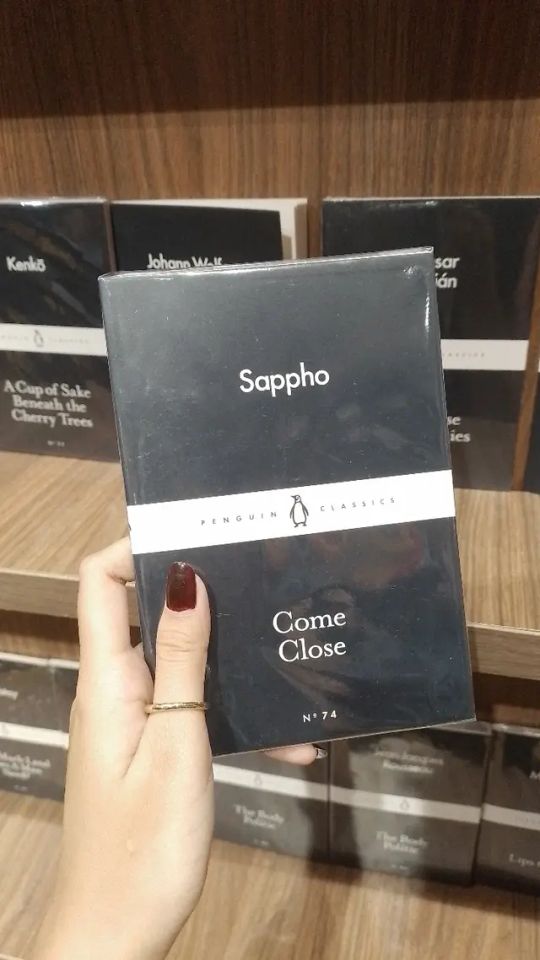
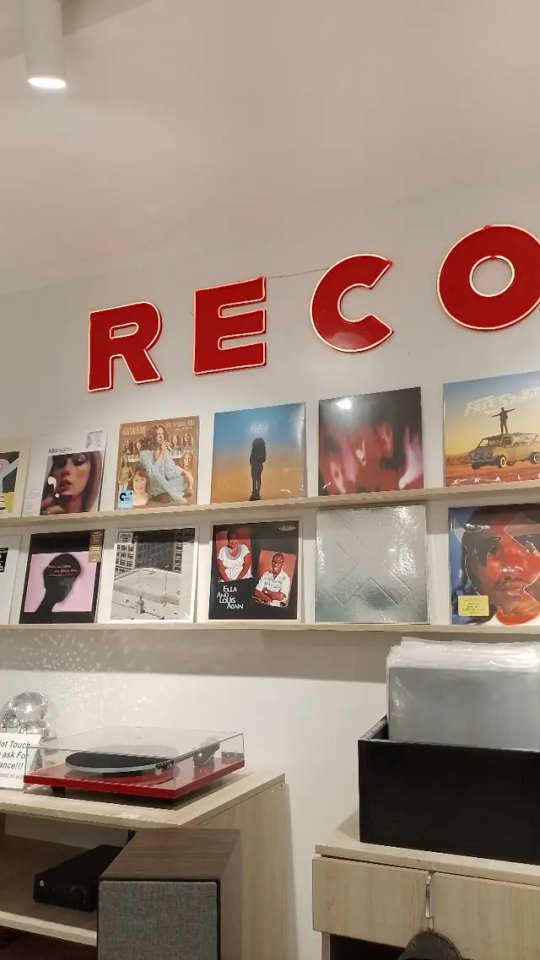
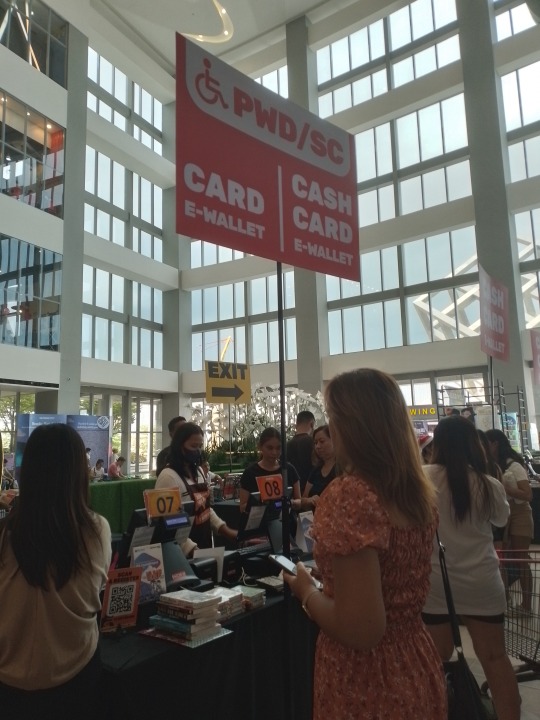
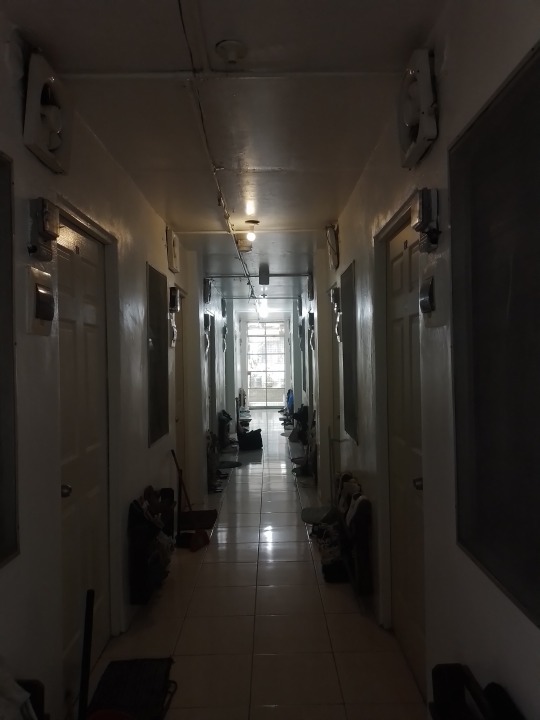
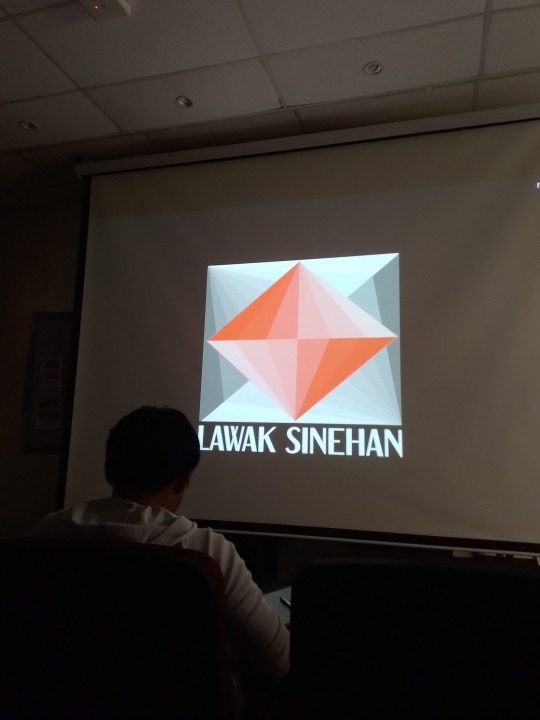
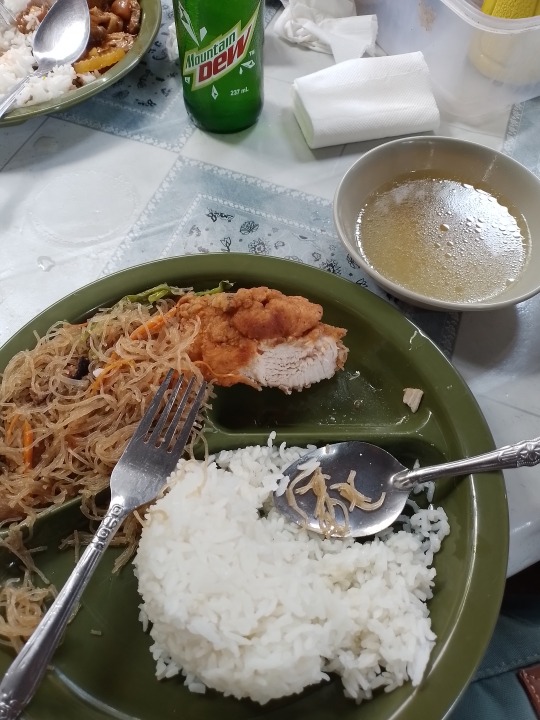
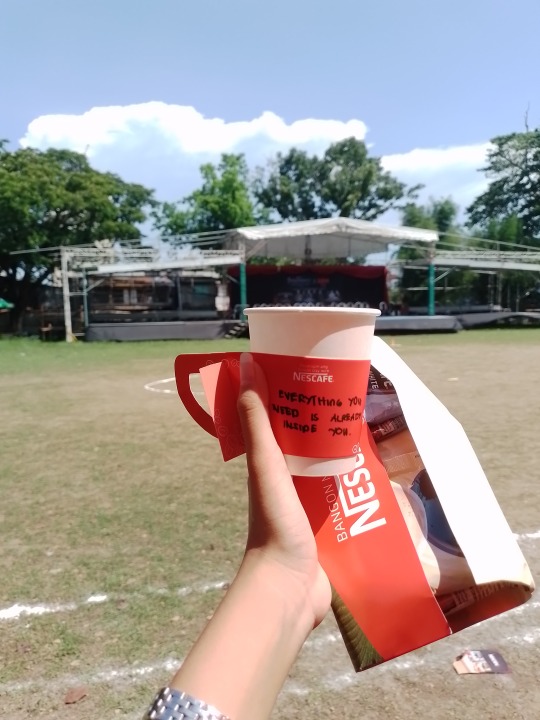
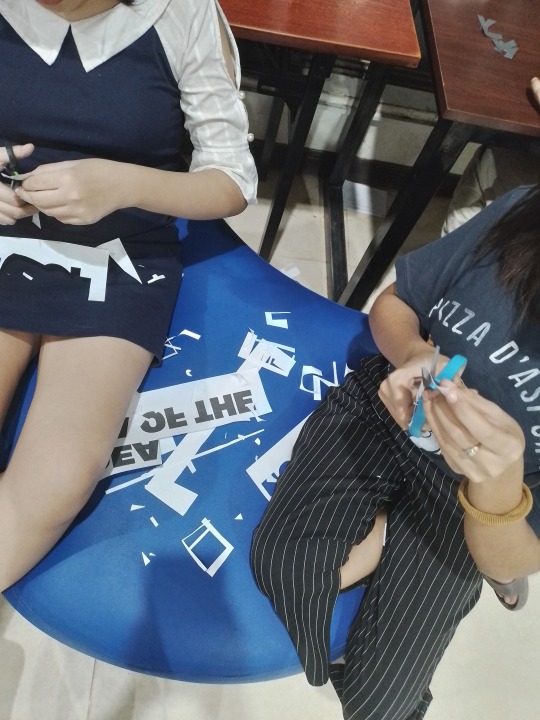
0 notes
Text
A learning diary...
Hello! I am Airam ("Ai") Crisna Limatog, a student of Comm 154 - Digital Storytelling. This blog serves as a compilation of all my experiences and learnings throughout the course, which covers topics like meaning-making and content production.

1 note
·
View note